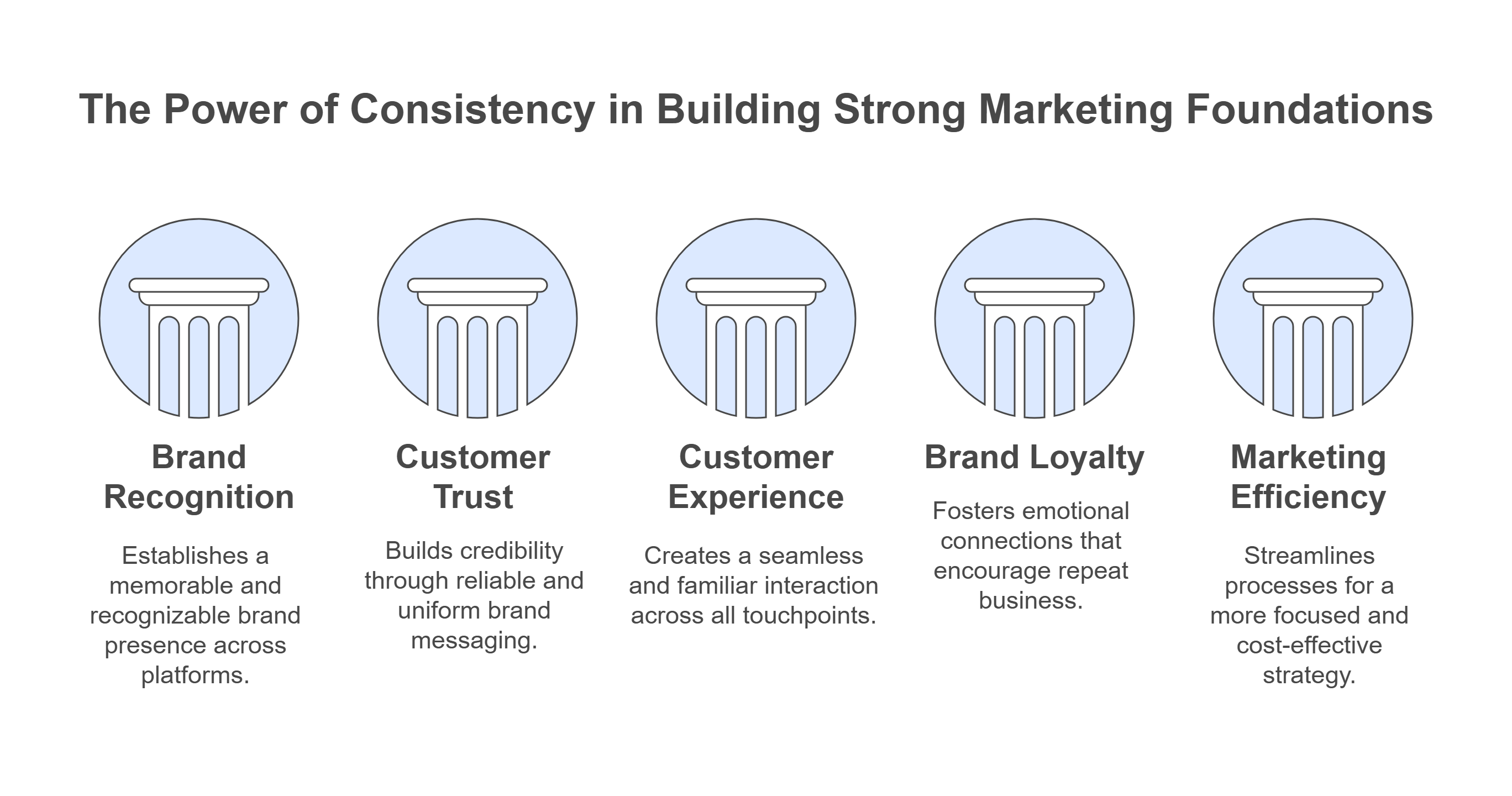Why Social Media Marketing Aesthetics Works—and How to Do It Right

Table of Contents
ToggleThe aesthetics of your social media presence can make or break your brand. It’s about crafting a visual identity that resonates with your audience. When done right, social media marketing aesthetics can significantly boost engagement and brand loyalty.
This article will explore the importance of aesthetics in social media marketing and provide practical tips to help you create a stunning online presence.
Key Takeaways
Aesthetic appeal is essential for building a strong brand identity.
Consistent visuals enhance user experience and foster trust.
Utilising the right platforms can amplify your brand’s reach.
Engaging content is key to capturing audience attention.
Measuring the impact of your aesthetic strategies helps refine your approach.
Understanding Social Media Marketing Aesthetics
Defining Aesthetic Appeal in Marketing
Okay, so what is aesthetic appeal in marketing? It’s basically how your brand looks and feels online. Think of it as the first impression you make on potential clients.
It’s about creating a visually pleasing and consistent style that grabs attention and reflects your brand’s personality. It’s not just about pretty pictures; it’s about communicating your values and attracting the right audience.
The Role of Visuals in Brand Identity
Visuals play a big part in shaping your brand identity. People remember images more easily than text, so your visual style can really stick in their minds. A strong visual identity helps people recognise your brand instantly, even without seeing your logo.
It’s about creating a cohesive look across all your social media platforms, from your profile picture to your posts. It’s like having a signature style – people know it’s you just by looking at it.
How Aesthetics Influence Consumer Behaviour
Aesthetics can really affect how people behave. Make your social media looks good so people are more likely to engage with your content, follow your page, and even become customers. Think about it: would you trust a brand with a messy, unprofessional-looking social media page? Probably not.
A well-designed aesthetic shows that you care about your brand and your customers, and that can make all the difference. It’s about creating a positive experience that encourages people to stick around.
A strong aesthetic can build trust and loyalty. When your social media looks consistent and professional, people are more likely to see you as a reliable and trustworthy brand. This can lead to increased engagement, more followers, and ultimately, more customers.
Crafting Your Brand's Visual Identity
It’s time to get into the nitty-gritty of how your brand looks. This isn’t just about making things pretty; it’s about creating a visual language that speaks to your audience and sets you apart. Think of it as building the visual foundation for everything you do.
Choosing the Right Colour Palette
Colours have a huge impact. They can evoke feelings, communicate values, and even influence buying decisions. Your colour palette should be more than just your favourite colours; it should reflect your brand’s personality and appeal to your target audience.
Consider these points when selecting your colours:
Brand Personality: What kind of vibe do you want to give off? Sophisticated? Playful? Trustworthy?
Target Audience: What colours resonate with them? Research colour psychology to understand the associations people have with different hues.
Competitor Analysis: What colours are your competitors using? You want to stand out, not blend in.
Establishing Consistent Typography
Fonts might seem like a small detail, but they play a big role in how your brand is perceived. Consistent typography helps create a cohesive and professional look across all your marketing materials.
Here’s what to think about:
Legibility: First and foremost, your fonts need to be easy to read, both online and in print.
Font Pairing: Choose a primary and secondary font that complement each other. Avoid using too many different fonts, as this can look messy.
Brand Personality: Just like colours, fonts have personalities. A serif font might convey tradition and authority, while a sans-serif font might feel more modern and approachable.
Creating a Cohesive Image Style
Your image style is all about the visual elements you use in your marketing materials, from photos and illustrations to graphics and videos. A cohesive image style helps create a recognisable and consistent brand identity.
To achieve this:
Define Your Aesthetic: What kind of images do you want to use? High-quality photos? Quirky illustrations? Minimalist graphics?
Establish a Philtre Style: Using the same philtres or editing techniques on all your images can help create a consistent look.
Consider Composition and Lighting: Pay attention to the way your images are composed and lit. Consistent composition and lighting can make a big difference.
Remember, your visual identity is a key part of your brand. Take the time to craft it carefully, and it will pay off in the long run. A well-defined visual identity helps you stand out from the crowd, build brand recognition, and connect with your audience on a deeper level.
The Importance of Consistency in Aesthetics

It’s easy to underestimate how much consistent aesthetics matter, but they’re actually pretty important. It’s not just about making your social media look nice; it’s about building something real with your audience.
Building Brand Recognition
Think about brands you know well. You probably recognise their colours, fonts, and the general vibe of their posts instantly, right? That’s the power of consistency.
When you use the same visual elements across all your social media, people start to recognise your brand immediately. It’s like a visual shortcut that helps them remember you.
Enhancing User Experience
Imagine visiting a website where the layout changes on every page, or a shop where the decor is different in every aisle. It would be confusing, wouldn’t it? The same goes for your social media—and even your website design.
A consistent aesthetic creates a smooth, predictable experience for your audience. They know what to expect, and that makes them feel more comfortable and engaged. Consistency makes your brand feel professional and trustworthy.
Fostering Trust and Loyalty
Consistency is also about building trust. When your brand presents a consistent image, it shows that you’re reliable and pay attention to detail. This can lead to increased loyalty, as people are more likely to stick with brands they trust.
Think of it this way:
Consistent visuals = reliable brand
Reliable brand = increased trust
Increased trust = loyal customers
A consistent aesthetic isn’t just a nice-to-have; it’s a key part of building a strong, recognisable brand that people trust and want to engage with. It’s about creating a cohesive experience that reinforces your brand’s values and personality.
Leveraging Social Media Platforms Effectively
It’s easy to think that just being on social media is enough. But to really make an impact, you need to think strategically about which platforms you’re using and how you’re using them. It’s not a one-size-fits-all situation, and what works on Instagram might completely flop on LinkedIn. Let’s get into it.
Identifying the Right Platforms for Your Brand
First things first: where does your audience hang out? There’s no point pouring time and effort into a platform if your ideal customer isn’t even there.
Think about the demographics, the type of content that thrives, and the overall vibe of each platform.
Instagram: Great for visual content, lifestyle brands, and reaching a younger audience.
Facebook: Still a powerhouse for community building, sharing news, and targeting specific demographics.
LinkedIn: Ideal for B2B marketing, professional networking, and sharing industry insights.
TikTok: Perfect for short-form video content, trends, and reaching a Gen Z audience.
X (Twitter): Good for quick updates, news, and engaging in conversations.
It’s better to be really good on one or two platforms than spread yourself too thin across all of them. Focus on quality over quantity.
Tailoring Content to Each Platform
Once you’ve chosen your platforms, it’s time to get specific. Don’t just copy and paste the same content across all channels. Each platform has its own unique culture and expectations.
Here’s a quick guide:
Instagram: High-quality images and videos, engaging captions, relevant hashtags.
Facebook: A mix of text, images, videos, and links. Focus on community engagement.
LinkedIn: Professional articles, industry news, and thought leadership content.
TikTok: Short, attention-grabbing videos, trending sounds, and challenges.
X (Twitter): Concise updates, news, and engaging in conversations using relevant hashtags.
Utilising Analytics for Improvement
Data is your friend. Social media platforms offer analytics tools that can give you insights into what’s working and what’s not.
Pay attention to metrics like engagement rate, reach, and website clicks. Use this information to refine your strategy and create content that resonates with your audience.
Here’s a simple table to illustrate how analytics can inform your content strategy:
Metric | What it Tells You | How to Improve |
|---|---|---|
Engagement Rate | How much your audience interacts with your content | Create more engaging content, ask questions, run polls, respond to comments. |
Reach | How many people see your content | Use relevant hashtags, post at optimal times, run ads. |
Website Clicks | How many people visit your website from social media | Include clear calls to action, use compelling visuals, target the right audience. |
By regularly monitoring your analytics and making adjustments, you can make sure you’re getting the most out of your social media efforts.
Engaging Your Audience Through Aesthetic Content
Alright, so you’ve got your brand looking sharp. Now, how do you actually get people involved with it? It’s not just about pretty pictures; it’s about making your audience feel something, making them want to be part of what you’re doing. Let’s look at some ways to make that happen.
Creating Visually Compelling Posts
First impressions matter, especially online. Think about it: people are scrolling through hundreds of posts a day. You need to grab their attention, and fast. That means your visuals need to be top-notch.
Use high-quality images and videos. Blurry or pixelated content just won’t cut it.
Experiment with different formats. Try cinemagraphs, short animations, or even interactive graphics.
Pay attention to composition. Use the rule of thirds, leading lines, and other design principles to create visually appealing layouts.
Incorporating User-Generated Content
People trust other people more than they trust brands. That’s why user-generated content (UGC) is so powerful. When your audience sees others enjoying your products or services, it builds credibility and encourages them to get involved.
Run contests or giveaways that encourage people to share their experiences with your brand.
Ask for testimonials and reviews, and feature them prominently on your social media channels.
Create a branded hashtag and encourage people to use it when they post about your brand.
UGC isn’t just free content; it’s social proof. It shows that real people are engaging with your brand, which can be incredibly persuasive.
Utilising Stories and Reels for Engagement
Stories and Reels are great for quick, engaging content that doesn’t need to be perfectly polished. They’re perfect for behind-the-scenes glimpses, quick tutorials, and interactive polls.
Use polls and quizzes to get feedback from your audience and start conversations.
Showcase your brand’s personality with fun, informal videos.
Use the swipe-up feature (if you have it) to drive traffic to your website or landing pages.
Measuring the Impact of Aesthetic Strategies
It’s all well and good having a beautiful social media presence, but how do you know if it’s actually working? Let’s look at how to measure the impact of your aesthetic strategies, so you can see what’s paying off and what needs tweaking.
Key Metrics to Track
To really understand if your aesthetic is hitting the mark, you need to keep an eye on some key numbers.
Here are a few to get you started:
Engagement Rate: This is the big one. How many likes, comments, shares, and saves are your posts getting? A high engagement rate means people are connecting with your content.
Reach and Impressions: How many people are seeing your posts? Reach is the number of unique users, while impressions are the total number of times your content is displayed. More eyes means more potential customers.
Website Traffic: Is your social media activity driving people to your website? Use tracking links to see how much traffic is coming from each platform.
Conversion Rates: Are people actually buying your products or services after seeing your social media content? This is the ultimate measure of success.
Audience Growth Rate: Are you gaining new followers? A steady growth rate shows that your aesthetic is attracting the right people.
Adjusting Strategies Based on Feedback
Numbers are great, but they don’t tell the whole story. You also need to pay attention to what people are saying. Read the comments, respond to messages, and run polls and Q&As to get direct feedback from your audience.
Use this feedback to refine your aesthetic. If people are saying they love a particular colour scheme, use it more often. If they’re not keen on a certain type of post, ditch it. It’s all about listening and adapting.
The Long-Term Benefits of Aesthetic Marketing
While it’s important to track short-term metrics, don’t forget about the long game. Aesthetic marketing is about building a brand that people connect with on an emotional level.
Over time, this can lead to:
Increased Brand Recognition: A consistent aesthetic makes your brand instantly recognisable.
Stronger Customer Loyalty: People are more likely to stick with a brand they feel a connection to.
Improved Brand Image: A well-crafted aesthetic can position your brand as high-quality and trustworthy.
Ultimately, the goal is to create a brand that people love and want to be a part of. This takes time and effort, but the rewards are well worth it.
Staying Ahead of Trends in Social Media Aesthetics
Social media moves fast, and what looks great today might feel dated tomorrow. To keep your brand’s aesthetic fresh and engaging, it’s important to stay informed and adaptable.
It’s not just about following trends blindly, but understanding why they resonate and how they can be used to connect with your audience in a genuine way. Staying current ensures your content remains relevant and appealing.
Monitoring Industry Trends
Keeping an eye on what’s happening across different platforms is key.
This means:
Following industry leaders and influencers: See what kind of content they’re creating and how their aesthetics are evolving.
Using social listening tools: Track conversations and hashtags related to your brand and industry to identify emerging trends.
Analysing competitor activity: What are your competitors doing? What’s working for them, and what isn’t?
Adapting to Changing Consumer Preferences
Consumer tastes are always changing, so it’s important to be flexible and willing to adjust your aesthetic accordingly.
This might involve:
Conducting regular audience research: Use surveys, polls, and focus groups to understand what your audience wants to see.
Experimenting with new styles and formats: Don’t be afraid to try new things and see how your audience responds.
Paying attention to feedback: Monitor comments, messages, and reviews to understand what people think of your content.
Innovating Your Aesthetic Approach
While it’s important to stay on top of trends, it’s also important to develop your own unique style.
This means:
Finding inspiration from unexpected sources: Look beyond social media for inspiration, such as art, design, and fashion.
Developing a clear brand voice and personality: This will help you create content that feels authentic and engaging.
Being willing to take risks: Don’t be afraid to experiment and push the boundaries of your aesthetic.
Remember, the goal is to create an aesthetic that is both visually appealing and true to your brand. By staying informed, adaptable, and innovative, you can ensure that your social media presence remains fresh, engaging, and effective.
Conclusion
Social media marketing aesthetics is about creating a strong connection with your audience. When you get your visuals right, you’re not just attracting attention—you’re building trust and loyalty.
Remember, consistency is key. Stick to your brand’s style, engage with your followers, and don’t shy away from showing the human side of your business. It’s all about creating an inviting space where potential clients feel welcome. Here’s a FREE website plan, take these tips on board, and you’ll be well on your way to making your social media presence work for you. Now, go ahead and start crafting that perfect aesthetic.
Frequently Asked Questions
What does social media aesthetics mean?
Social media aesthetics refers to the overall look and feel of your brand on social media. It includes the colours, fonts, and images you use, which should reflect your brand’s personality and values.
Why are visuals important in marketing?
Visuals are key in marketing because they grab attention and help communicate your message quickly. Good visuals can make your brand memorable and encourage people to engage with your content.
How can I create a strong visual identity for my brand?
To create a strong visual identity, start by choosing a colour palette that represents your brand. Use consistent fonts and styles across all your posts to create a unified look.
Why is consistency important in social media marketing?
Consistency helps build brand recognition. When your visuals and messaging are the same across all platforms, it makes it easier for customers to remember and trust your brand.
How can I engage my audience with aesthetic content?
You can engage your audience by creating eye-catching posts, sharing user-generated content, and using features like stories and reels to showcase your brand in a fun way.
What metrics should I track to measure the impact of my social media aesthetics?
Key metrics include engagement rates, follower growth, and website traffic from social media. Tracking these will help you understand what works and what needs improvement.








